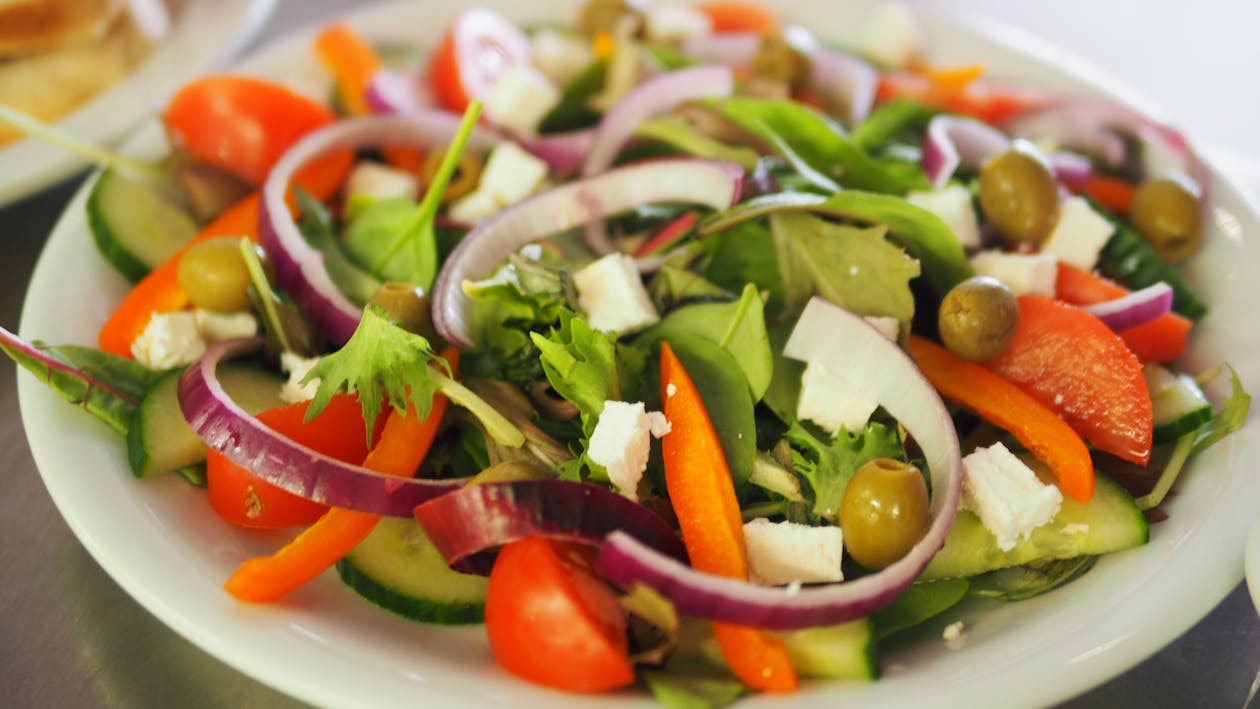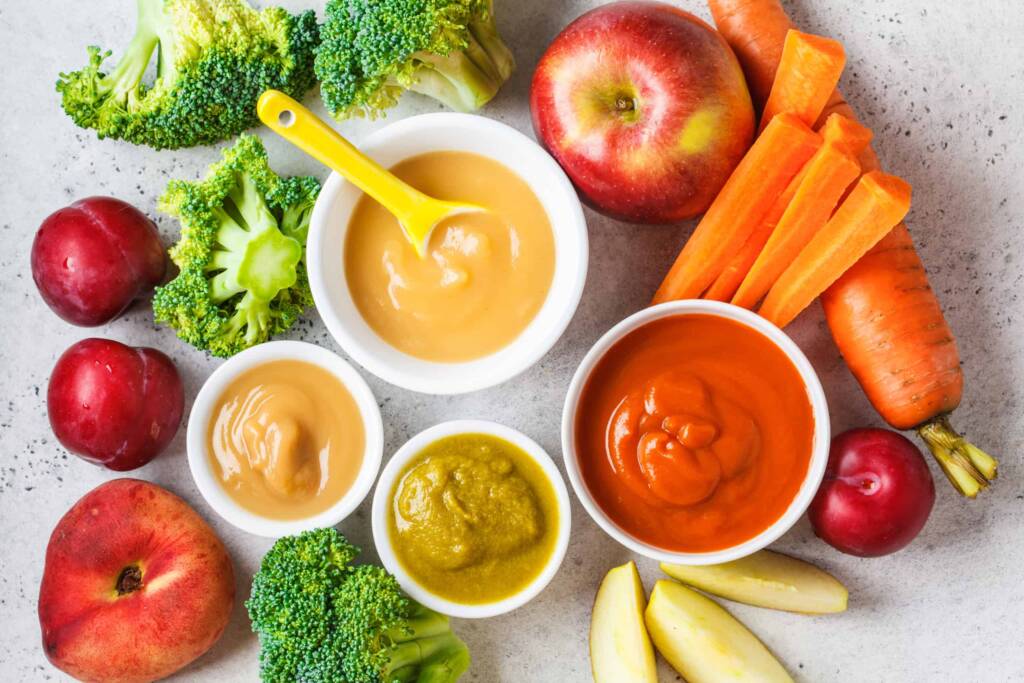Table of Contents
- Why the “Salad Struggle” is Real (And How to Win!)
- The Magic of “DIY”: Unleashing Your Little Salad Artist
- The Building Blocks: Crafting Kid-Approved Salads
- Top 5 DIY Healthy Salad Recipes for Kids (That Taste Amazing!)
- Tips for Salad Success: Beyond the Recipe
- Troubleshooting Common Salad Hurdles
- Conclusion: Cultivating Healthy Habits, One Fun Salad at a Time
Salad Sabotage No More! Fun & Easy DIY Healthy Salad Recipes for Kids They’ll Actually Eat
Let’s be honest, parents. Hearing the word “salad” directed at your child often results in… well, let’s call it *less than enthusiastic* feedback. Visions of limp lettuce and unwanted veggies might dance in their heads (and yours!). You want them to eat healthy, to load up on those amazing vitamins and minerals packed into fresh produce, but turning salad from a dreaded dish into a desirable delight feels like mission impossible. But what if I told you it doesn’t have to be? What if making and eating salads could actually be… fun?
Welcome to the world of DIY healthy salad recipes for kids! We’re not just talking about throwing some greens in a bowl. We’re talking about transforming salad time into an interactive, creative, and delicious experience. It’s about empowering your little chefs to build their own masterpieces, packed with ingredients they choose (with a little guidance, of course!). Forget the mealtime battles and get ready to see your kids potentially *ask* for salad night. Intrigued? Let’s dive into making salads less of a chore and more of a cheer!

Why the “Salad Struggle” is Real (And How to Win!)
Before we jump into recipes, let’s understand *why* kids often turn their noses up at salads. It’s usually not just defiance; there are legitimate reasons:
- Bitterness: Some greens (like radicchio or arugula) can be genuinely bitter to sensitive young palates.
- Texture Troubles: A bowl of solely soft or solely crunchy things can be unappealing. Kids often crave variety. Soggy lettuce is a universal turn-off!
- “Boring” Factor: Let’s face it, a plain green salad doesn’t exactly scream excitement.
- Unfamiliarity: New foods can be intimidating. A salad might contain several unfamiliar ingredients at once.
- Control: Kids often have very little control over their lives, and food is one area they *can* exert control. Saying “no” is powerful.
So, how do we overcome these hurdles? It’s all about shifting the perspective and the approach:
- Focus on Mild & Sweet: Start with milder greens like romaine, iceberg, or baby spinach. Incorporate naturally sweet veggies (corn, carrots, bell peppers) and fruits.
- Texture Play: Aim for a mix! Combine soft (cheese, avocado), crunchy (croutons, seeds, cucumber), and chewy (dried fruit, grilled chicken).
- Make it Visually Appealing: Use colourful ingredients. Cut veggies into fun shapes. Presentation matters!
- Introduce Gradually: Don’t overwhelm them. Start with familiar ingredients and introduce one new item at a time alongside favourites.
- Empowerment through Choice: This is the secret weapon! Letting kids build their own salads gives them ownership and makes them far more likely to eat their creations. Enter the DIY approach!
The Magic of “DIY”: Unleashing Your Little Salad Artist
The single most effective strategy for getting kids excited about salads is letting them make their own. It taps into their natural curiosity, creativity, and desire for independence. Setting up a “salad bar” at home transforms dinner from a passive activity into an engaging one.
Setting Up Your Kid-Friendly Salad Bar
Creating a mini salad bar doesn’t need to be complicated. Here’s how to do it:
- Choose the Components: Select a variety of ingredients from different categories (see next section). Aim for colour and texture variety.
- Prep Work: Wash and chop everything into bite-sized, manageable pieces. Younger kids might need smaller cuts.
- Separate Bowls: Arrange each ingredient in its own small bowl or container. Muffin tins work great for smaller quantities and lots of options!
- Easy Access: Set it up on a low table or a easily reachable counter space. Provide kid-sized tongs or spoons for serving.
- Guide, Don’t Dictate: Encourage them to try different things, maybe suggest combinations (“Try putting some crunchy carrots with that soft cheese!”), but let them lead the way. It’s okay if their first few creations are a bit unconventional! The goal is positive exposure.
- Make it an Event: Call it “Salad Bar Night” or “Build-a-Bowl Bonanza”. Make it feel special.
This approach not only increases the chances they’ll eat the salad but also teaches them about different foods, colours, textures, and making balanced choices. It’s a win-win for nutrition and developing healthy habits.

The Building Blocks: Crafting Kid-Approved Salads
A great kid-friendly salad needs a good foundation and exciting components. Think like an architect, but for salads! Here’s a breakdown of potential ingredients to include in your DIY salad bar:
1. The Base Layer: More Than Just Lettuce
- Mild Greens: Romaine lettuce (crunchy!), iceberg lettuce (super mild), baby spinach (tender, packed with nutrients).
- Alternatives: Don’t limit yourself to leaves! Cooked and cooled quinoa, pasta shapes (rotini, shells), or even couscous can form a delicious base. This is great for kids who are texture-sensitive to lettuce.
2. Veggie Victory: Colourful & Fun
- Sweet & Crunchy: Shredded carrots, corn kernels (canned or thawed frozen), chopped bell peppers (red, yellow, orange are sweetest), cherry tomatoes (halved or quartered), sugar snap peas, cucumber slices or sticks.
- Mild & Tender: Steamed and cooled broccoli florets (cut small), chopped celery.
- Get Creative with Cuts: Use crinkle cutters for cucumbers and carrots. Small cookie cutters can make fun shapes out of bell peppers or jicama.
3. Protein Power-Ups: Filling & Satisfying
- Meat & Poultry: Grilled chicken strips, shredded rotisserie chicken, lean ground turkey (taco seasoned!), diced ham or turkey.
- Plant-Based Power: Chickpeas (garbanzo beans), black beans, edamame (shelled), lentils, cubed tofu (baked or pan-fried), hard-boiled eggs (sliced or chopped).
- Cheese Choices: Shredded cheddar or mozzarella, crumbled feta, small cubes of mild cheese, cottage cheese.
4. Fruity Fun: A Touch of Sweetness
- Berries: Strawberries (sliced), blueberries, raspberries.
- Other Fruits: Diced apples, grapes (halved), mandarin orange segments, chopped pears, dried cranberries or raisins. Fruit adds natural sweetness that often appeals to kids and balances other flavours.
5. The Crunch Factor: Texture is Key!
- Croutons: Store-bought or homemade (toss bread cubes with olive oil and herbs, bake until crispy).
- Seeds: Sunflower seeds (shelled), pumpkin seeds (pepitas). Great source of healthy fats!
- Nuts: Chopped almonds, walnuts, pecans (ensure they are age-appropriate and there are no allergy concerns).
- Other Crispies: Crispy fried onions (like the ones for green bean casserole!), crushed tortilla chips, crispy chickpeas (roast canned chickpeas with oil and spices).
6. Dressing Delight: The Finishing Touch
Dressing can make or break a salad for kids. Often, creamy and slightly sweet options are winners.
- Kid Favourites: Ranch (look for healthier versions or make your own), honey mustard, creamy Italian, Thousand Island.
- Simple Vinaigrettes: A basic mix of olive oil, lemon juice or mild vinegar (like apple cider or rice vinegar), and a pinch of salt and sugar/honey can be surprisingly popular.
- DIY Dressings: Get kids involved here too! Shaking ingredients in a jar is fun. Try a simple yogurt-based ranch (plain yogurt, dill, garlic powder, onion powder, salt, pepper) or a honey-lime dressing (lime juice, olive oil, honey, salt).
- Serving Tip: Always serve dressing on the side. This gives kids control over how much they use and prevents the salad from getting soggy prematurely.

Top 5 DIY Healthy Salad Recipes for Kids (That Taste Amazing!)
Ready for some specific inspiration? These recipes are designed with kids in mind – colourful, customizable, and packed with flavour. Remember to set these up salad-bar style for maximum engagement!
1. Rainbow Veggie Pasta Salad
This is often a huge hit because, well, pasta! It’s familiar, filling, and a great vehicle for veggies.
- Base: Cooked and cooled rotini or fusilli pasta (whole wheat or regular).
- Veggies: Cherry tomatoes (halved), cucumber (diced), bell peppers (diced – use red, yellow, orange for colour!), black olives (sliced), corn, peas.
- Protein: Mini mozzarella balls (bocconcini), chickpeas, diced grilled chicken.
- Dressing: Creamy Italian dressing or a simple vinaigrette (olive oil, red wine vinegar, pinch of oregano, salt, pepper).
- Fun Factor: The corkscrew pasta traps the dressing and small veggies perfectly.
2. Crunchy Chicken & Apple Salad
A delightful mix of savoury, sweet, and crunchy elements.
- Base: Chopped romaine lettuce or baby spinach.
- Protein: Shredded or diced cooked chicken (rotisserie chicken works wonders!).
- Fruit & Veggies: Diced apples (like Fuji or Gala), celery (thinly sliced), shredded carrots.
- Crunch: Chopped walnuts or pecans (optional, check for age/allergies), dried cranberries, sunflower seeds.
- Cheese: Shredded cheddar or crumbled feta.
- Dressing: Mild honey mustard dressing or a creamy poppy seed dressing.
- Tip: Toss apples lightly with lemon juice to prevent browning if prepping ahead.
3. “Build Your Own” Taco Salad Bowls
Deconstructed tacos in a bowl – always a crowd-pleaser!
- Base: Shredded iceberg or romaine lettuce.
- Protein: Seasoned ground turkey or beef (cooled), black beans or pinto beans (rinsed).
- Veggies: Diced tomatoes, corn, sliced black olives, diced avocado or guacamole.
- Cheese: Shredded Mexican blend or cheddar cheese.
- Crunch: Crushed tortilla chips (let them add these at the end!).
- Dressing/Toppings: Mild salsa, sour cream or plain Greek yogurt, kid-friendly ranch.
- Make it Fun: Serve in fun bowls, maybe even edible tortilla bowls if you’re feeling ambitious!
4. Sweet Berry Spinach Salad
This salad feels like a treat, thanks to the juicy berries.
- Base: Baby spinach (mild and tender).
- Fruit: Sliced strawberries, blueberries, mandarin orange segments.
- Protein: Grilled chicken strips (optional), chickpeas.
- Crunch: Candied pecans or sliced almonds (optional), pumpkin seeds.
- Cheese: Crumbled feta or goat cheese (start with a small amount if kids are unsure).
- Dressing: Raspberry vinaigrette (store-bought or homemade – blend raspberries, olive oil, balsamic vinegar, honey), or a light poppy seed dressing.
- Appeal: The vibrant colours are naturally attractive to kids.
5. Pizza Salad Fun
Capture the flavours of pizza in a healthier format!
- Base: Chopped romaine lettuce.
- Veggies: Cherry tomatoes (halved), sliced black olives, chopped bell peppers, sliced mushrooms (if your kids like them).
- Protein: Mini pepperoni slices (turkey pepperoni is a leaner option), diced ham, mini mozzarella balls.
- Crunch: Garlic and herb croutons.
- Dressing: Italian dressing, ranch, or even a drizzle of pizza sauce thinned with olive oil.
- Bonus: Sprinkle with a little Parmesan cheese and dried oregano.
Tips for Salad Success: Beyond the Recipe
Getting kids onboard with salads is a marathon, not a sprint. Here are some extra tips to keep things positive and encourage adventurous eating:
- Presentation is Key: Arrange the salad attractively on the plate. Use colourful ingredients. Make funny faces with the veggies!
- Start Small: Offer a tiny portion of salad alongside a familiar meal. No pressure to finish it, just exposure.
- Involve Them in Prep: Beyond building their own, kids can help wash lettuce, tear leaves, stir dressings (in a sealed jar!), or chop soft ingredients with a kid-safe knife.
- Fun Names: Call salads silly names like “Dinosaur Fuel Salad,” “Princess Power Bowl,” or “Superhero Salad.”
- Lead by Example: Let your kids see YOU enjoying salads regularly. Enthusiasm is contagious.
- Patience, Patience, Patience: It can take multiple exposures (sometimes 10-15!) for a child to accept a new food. Don’t get discouraged.
- No Forcing: Forcing a child to eat something almost guarantees they’ll dislike it long-term. Keep offering, keep it low-pressure.
- Make it Routine: Incorporate a “salad night” or offer a small side salad with meals regularly to normalize it.

Troubleshooting Common Salad Hurdles
Even with the best intentions and coolest salad bars, you might hit roadblocks. Here’s how to handle a few common issues:
“My child only picks out their favourite items!”
This is totally normal, especially at first! Celebrate that they’re eating *something* from the salad. Continue offering variety. You can try the “one bite rule” (if that works for your family dynamic) – they need to try one bite of something less preferred before loading up on favourites. Or, gently guide them: “Wow, those strawberries are great! They taste awesome with a little bit of spinach too, want to try them together?”
“They refuse to try anything new.”
Keep exposure low-pressure. Put the new item on the salad bar without comment. Let them see *you* eating and enjoying it. Talk about the food in neutral terms – its colour, texture, shape – rather than just focusing on taste. Sometimes pairing a new food with a favourite dip or dressing helps.
“It’s just too messy!”
Embrace the mess (within reason!). Learning to handle different foods and utensils is part of the process. Use placemats, have wipes handy. For younger kids, ensure pieces are large enough to grasp easily but small enough to prevent choking hazards. Maybe start with less ‘saucy’ salads initially.
“They say they don’t like salad, period.”
Try redefining “salad.” Maybe start with a fruit salad, a pasta salad, or a quinoa bowl. Focus on the DIY aspect – “We’re not having ‘salad,’ we’re having a ‘Build-Your-Own Bowl Bar’!” Sometimes changing the name changes the perception.
Conclusion: Cultivating Healthy Habits, One Fun Salad at a Time
Introducing healthy salads for kids doesn’t have to be an uphill battle. By shifting the focus from forcing veggies to fostering fun, creativity, and choice, you can transform mealtime dynamics. The DIY salad bar approach empowers children, makes them more invested in their food, and naturally encourages them to try new things.
Remember to start with familiar and well-liked ingredients, gradually introduce new tastes and textures, and always keep the experience positive and low-pressure. Celebrate the small victories, whether it’s trying a single new veggie or building a surprisingly balanced bowl. Patience and persistence are your allies.
These easy salad recipes kids can assemble themselves are just a starting point. Get creative, involve your little ones in planning and prepping, and watch as they potentially discover a newfound appreciation for fresh, wholesome foods. You’re not just making salads; you’re building lifelong healthy eating habits, one colourful, crunchy, and delicious bowl at a time. Happy building!



